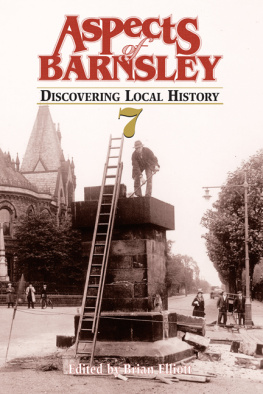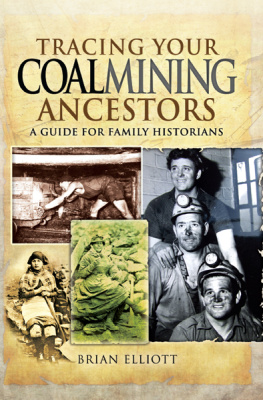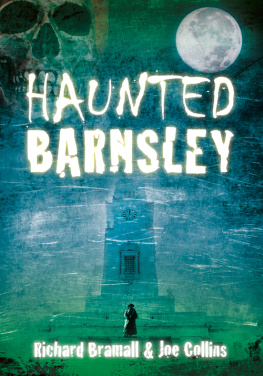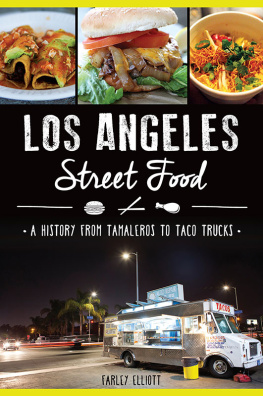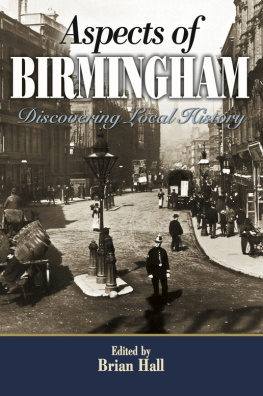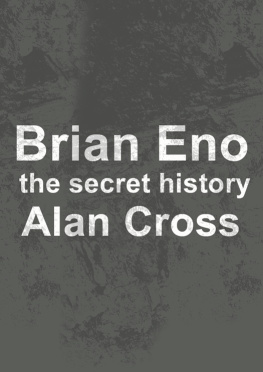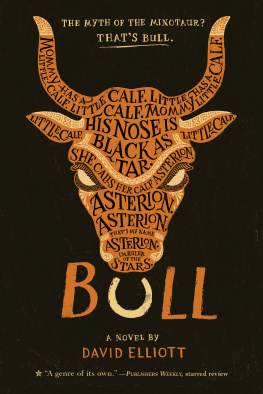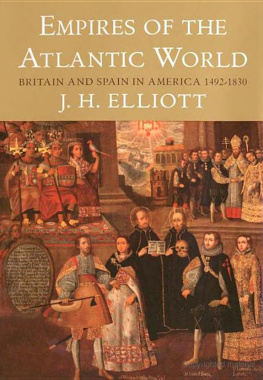Brian Elliott - Aspects of Barnsley 7: Discovering Local History
Here you can read online Brian Elliott - Aspects of Barnsley 7: Discovering Local History full text of the book (entire story) in english for free. Download pdf and epub, get meaning, cover and reviews about this ebook. year: 2002, publisher: Wharncliffe, genre: Religion. Description of the work, (preface) as well as reviews are available. Best literature library LitArk.com created for fans of good reading and offers a wide selection of genres:
Romance novel
Science fiction
Adventure
Detective
Science
History
Home and family
Prose
Art
Politics
Computer
Non-fiction
Religion
Business
Children
Humor
Choose a favorite category and find really read worthwhile books. Enjoy immersion in the world of imagination, feel the emotions of the characters or learn something new for yourself, make an fascinating discovery.
- Book:Aspects of Barnsley 7: Discovering Local History
- Author:
- Publisher:Wharncliffe
- Genre:
- Year:2002
- Rating:3 / 5
- Favourites:Add to favourites
- Your mark:
- 60
- 1
- 2
- 3
- 4
- 5
Aspects of Barnsley 7: Discovering Local History: summary, description and annotation
We offer to read an annotation, description, summary or preface (depends on what the author of the book "Aspects of Barnsley 7: Discovering Local History" wrote himself). If you haven't found the necessary information about the book — write in the comments, we will try to find it.
Brian Elliott: author's other books
Who wrote Aspects of Barnsley 7: Discovering Local History? Find out the surname, the name of the author of the book and a list of all author's works by series.
Aspects of Barnsley 7: Discovering Local History — read online for free the complete book (whole text) full work
Below is the text of the book, divided by pages. System saving the place of the last page read, allows you to conveniently read the book "Aspects of Barnsley 7: Discovering Local History" online for free, without having to search again every time where you left off. Put a bookmark, and you can go to the page where you finished reading at any time.
Font size:
Interval:
Bookmark:


First Published in 2002 by
Wharncliffe Books
an imprint of
Pen and Sword Books Limited,
47 Church Street, Barnsley,
South Yorkshire. S70 2AS
Copyright Wharncliffe Books 2002
For up-to-date information on other titles produced under the
Wharncliffe imprint, please telephone or write to:
Wharncliffe Books
FREEPOST
47 Church Street
Barnsley
South Yorkshire S70 2BR
Telephone (24 hours): 01226 - 734555
ISBN: 1-903425-24-7
eISBN: 978-1-78337-888-3
All rights reserved. No part of this publication may be
reproduced, stored in a retrieval system, or transmitted, in
any form or by any means, electronic, mechanical,
photocopying, recording or otherwise, without the prior
permission in writing of the publishers.
This book is sold subject to the condition that it shall not,
by way of trade or otherwise, be lent, resold, hired out or
otherwise circulated without the publishers prior consent in
any form of binding or cover other than that in which it is
published and without a similar condition including this
condition being imposed on the subsequent purchaser.
A CIP catalogue record of this book is available from the
British Library
Cover illustration: Demolishing the old obelisk at the end of Church Street, 1932 (Norman Ellis Collection)
Illustration, contents page: Tramcar No. 10 passes Masons drinking fountain, Sheffield Road, c.1912 (Norman Ellis Collection)
Printed in the United Kingdom by
CPI UK
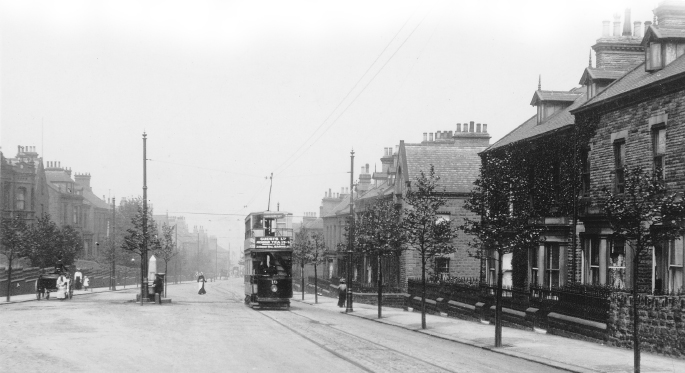
by
Brian Elliott
Welcome to the seventh book in the Aspects of Barnsley series. Once again, our contributors (seven of them new) have written and compiled an interesting and varied collection of articles, produced at a time when a great deal of rethinking is taking place about the future of our historic town. For some people, the word historic may seem an odd appellation for a place such as Barnsley but the considerable volume of work which has now accumulated, some eighty articles, does much to document and celebrate the history of our town and neighbourhood.
Regular contributor Melvyn Jones opens the present volume with a most appropriate and fascinating subject, exploring the ancient place-names of Barnsleys Metropolitan Borough. Mel rightly says that our area rings with the names of history, skilfully taking us through some 2,000 years of name-giving, explaining origins and the evolution of many local places. The editors chapter on medieval Barnsley offers some insights into a somewhat neglected area, making use of on the ground evidence, maps, aerial photographs and some new documentary sources.
Well-written autobiographical and reminiscence pieces are always welcome additions to the series and this volume contains several excellent examples. Roy Portman describes his working life at one of Barnsleys former engineering works: Needhams, once world-famous for making colliery pulley wheels. The article is enhanced by some of Roys superb photographs. Many of us will remember the taxi rank that once stood at the approach to the Exchange Railway Station and adjacent to Barnsley Bus Station. Mike Stringer, writing from Billericay, Essex, not only describes his fathers taxi business but also writes evocatively about his own early life in Barnsley during the 1950s. Colin Taylor is an even more distant writer, living in the USA, and his affectionate memoir relating to family, places and events in Smithies and Barnsley, set mainly during the inter-war period, is extremely clear.
Margaret Mann provides us with interesting descriptions of Canon Sorby and several characters and personalities of old Darfield whilst Barry Jacksons exploration of pre-1960s Monk Bretton is based on a recorded interview with one of its most colourful village characters: Mr Johnny Weston. I will never forget chatting to Johnny about the history of Monk Bretton when I was a teenager. He showed me around the village, pointing out and explaining many historic features, and then we went to his garden where, under an old pear tree, he told stories and anecdotes about the village and its characters, and of course talked a great deal about his love of cricket. Barry has produced a superb tribute and a most interesting description of an old Monk Bretton that has unfortunately just about disappeared.
John Goodchild continues to support the Aspects series, using source material from his unique Local History Study Centre at Wakefield. For this volume we benefit from Johns well-known interest in coal mining history. His essay on the Edmunds and Swaithe Main collieries, based on an even more detailed research paper, provides new material concerning that busy industrial area to the south of the town. Johns short piece on schoolmaster Charles Ward of Darton Grammar School, also reminds us of the Victorian practice of presenting illuminated addresses to individuals in recognition of service and achievement.
In the same genre as diaries, school log books are a fascinating source of information, relating to both personal and official life. What makes John Brooms selections from the Royston Secondary School log books so special is that they relate to the formative years of the school during the 1930s and continue into the difficult wartime period. There are of course many former pupils who will find Johns meticulous research of considerable interest. When I began teaching at the school in the early 1970s one of the most experienced staff was Mr Arthur Wilson who, apart from war service, had taught at the school since its foundation in 1934.
Norman Ellis began collecting postcards more than thirty years ago and has carried out a great deal of research and writing, due to his interest in subjects and themes such as transport, collieries and West Riding towns and villages. It is very pleasing to receive a contribution from him on Barnsley, illustrated with some wonderful photographic images from his extensive collection.
Transport, albeit short-lived, is the subject of Richard Buckleys essay on the Dearne District Light Railways. Using original source material from Sheffield Archives, he helps us to appreciate some of the complexities and indeed the eventual demise of (apart from modern developments) the last complete tramway opened in the UK.
Wharncliffe Books, an imprint of Pen & Sword Books, continue to be generous in commissioning the Barnsley volumes and also for helping me develop the entire series which now extends to more than twenty UK locations and about thirty-five titles. Recent or forthcoming new Aspects of areas include Teesside, Lancaster, Calderdale, North Lincolnshire and Chesterfield. Many thanks are due to Charles Hewitt and his small team at the Drill Hall, Eastgate Barbara, Paula, Rachael, Sylvia, Paul, Roni, Jon, Mattie, Michelle, Jonathan and Kate for their continued encouragement, advice and hard work. Lastly and by no means least, my sincere thanks to all the contributors and to all our loyal readers.
1. W HATS IN A N AME ? T HE A NCIENT P LACE -N AMES OF B ARNSLEY M ETROPOLITAN B OROUGH
by Melvyn Jones
THE BARNSLEY AREA rings with the names of history the River Dove, Barnsley itself, Dodworth, Darfield, Grimethorpe, Elsecar, Gunthwaite, Cheapside, West Gate (in Monk Bretton) Blucher Street, Peel Street names covering at least 2,000 years of name-giving in the area covered by the metropolitan borough. And the tradition has continued in more recent times with residential expansion, but this time just to confuse us we now have whole estates such as the Athersley South estate full of names from the Peak District such as Bamford Avenue, Buxton Road and Peveril Crescent and Athersley North full of names from Nottinghamshire such as Beeston Square, Bramcote Avenue, Laxton Road.
Font size:
Interval:
Bookmark:
Similar books «Aspects of Barnsley 7: Discovering Local History»
Look at similar books to Aspects of Barnsley 7: Discovering Local History. We have selected literature similar in name and meaning in the hope of providing readers with more options to find new, interesting, not yet read works.
Discussion, reviews of the book Aspects of Barnsley 7: Discovering Local History and just readers' own opinions. Leave your comments, write what you think about the work, its meaning or the main characters. Specify what exactly you liked and what you didn't like, and why you think so.

